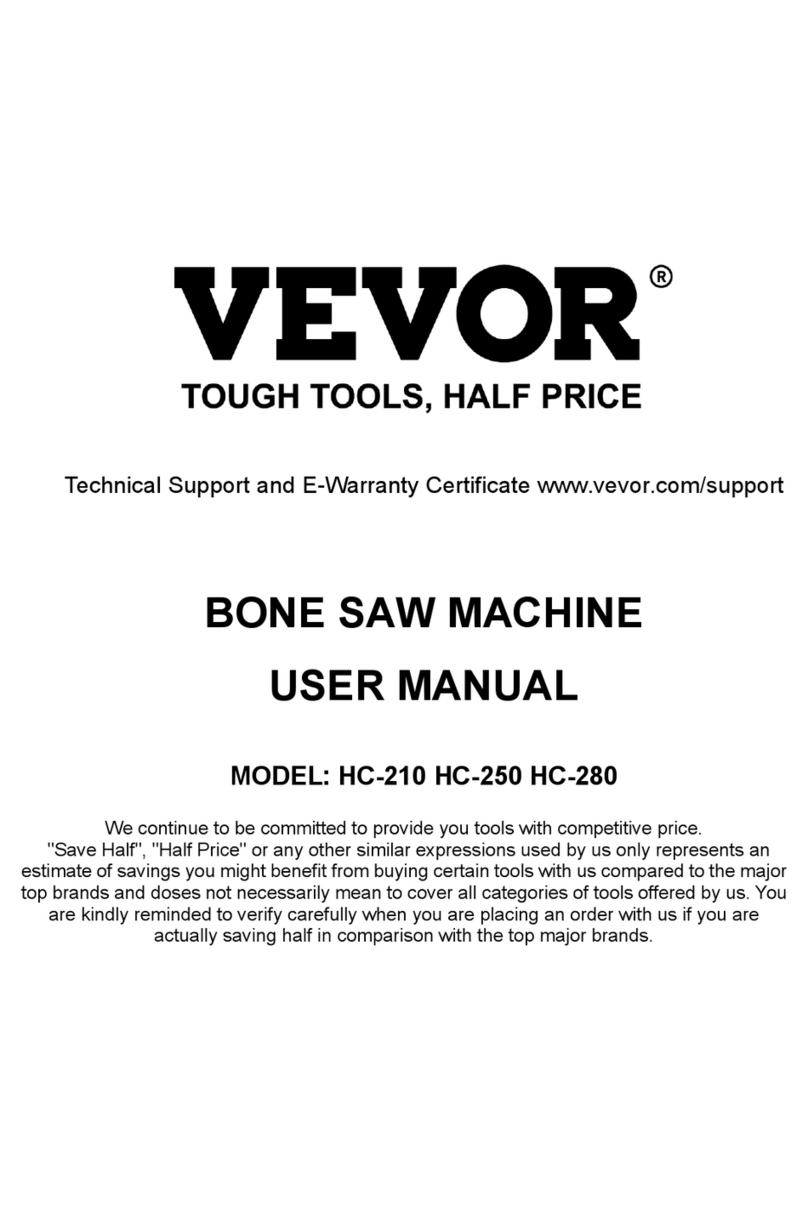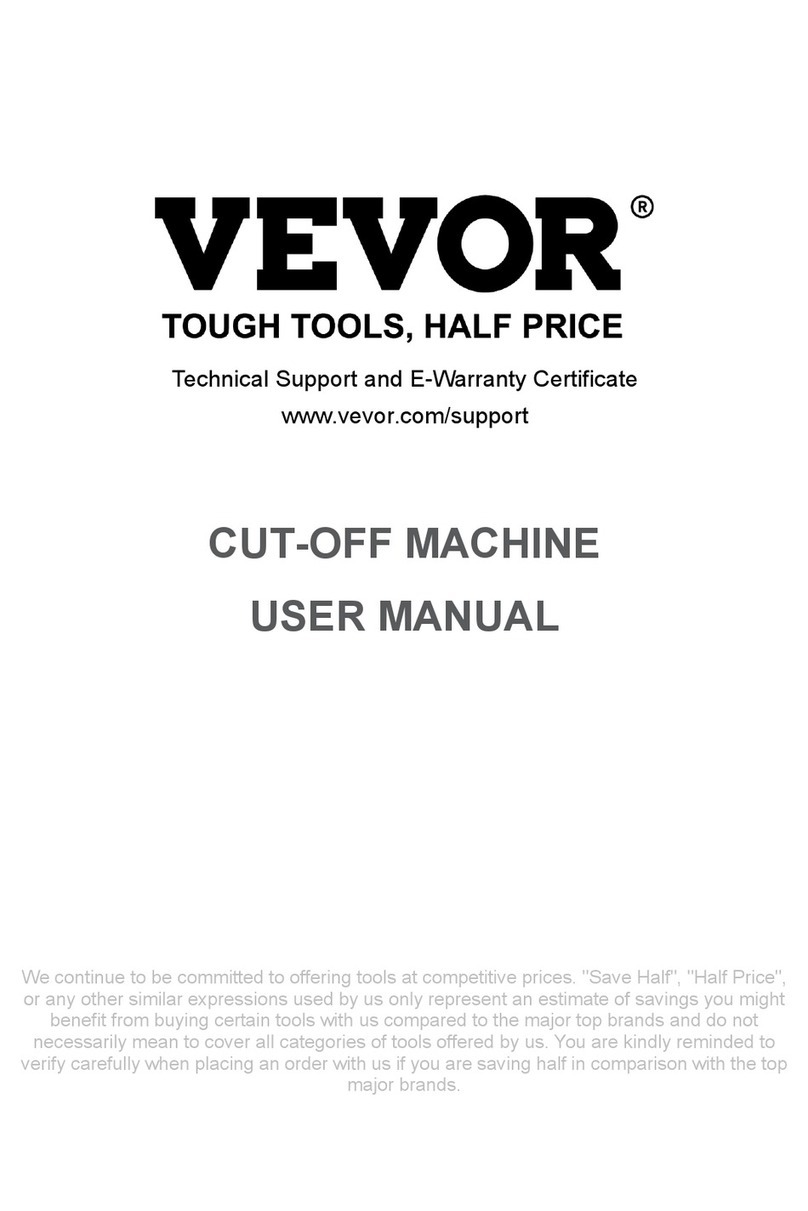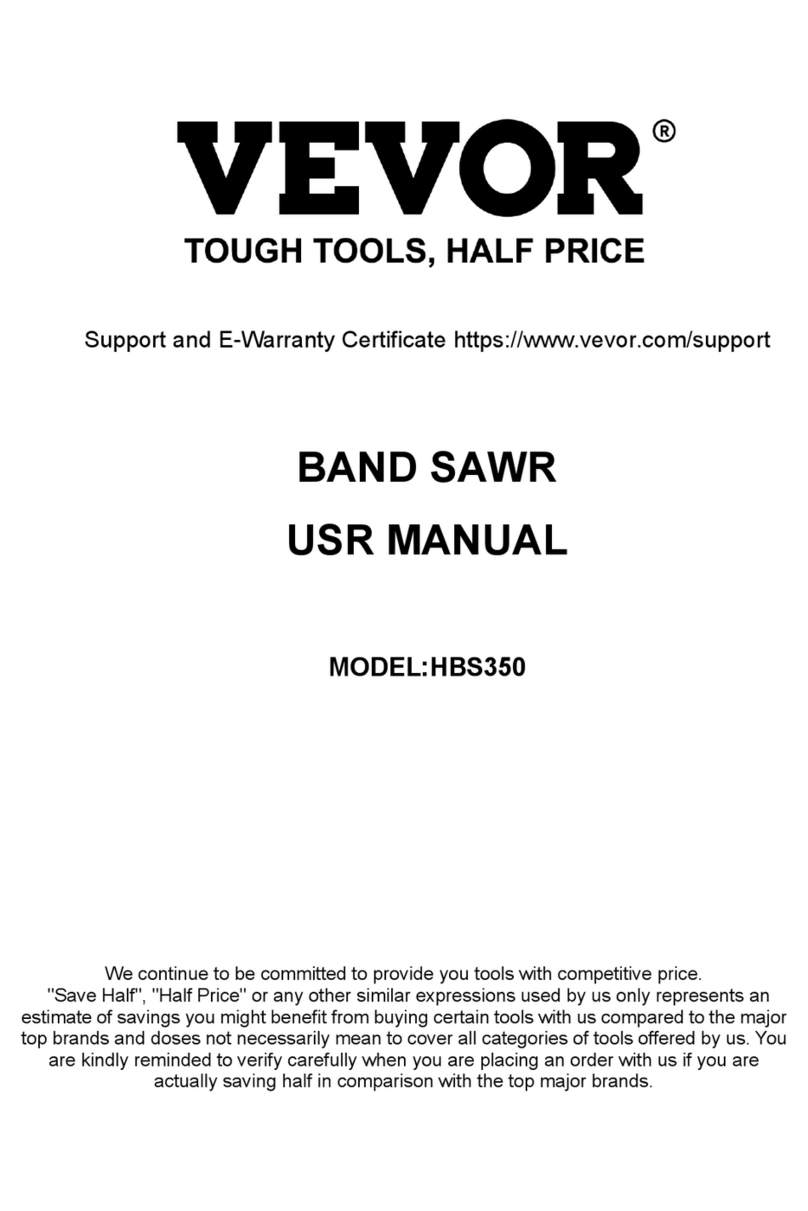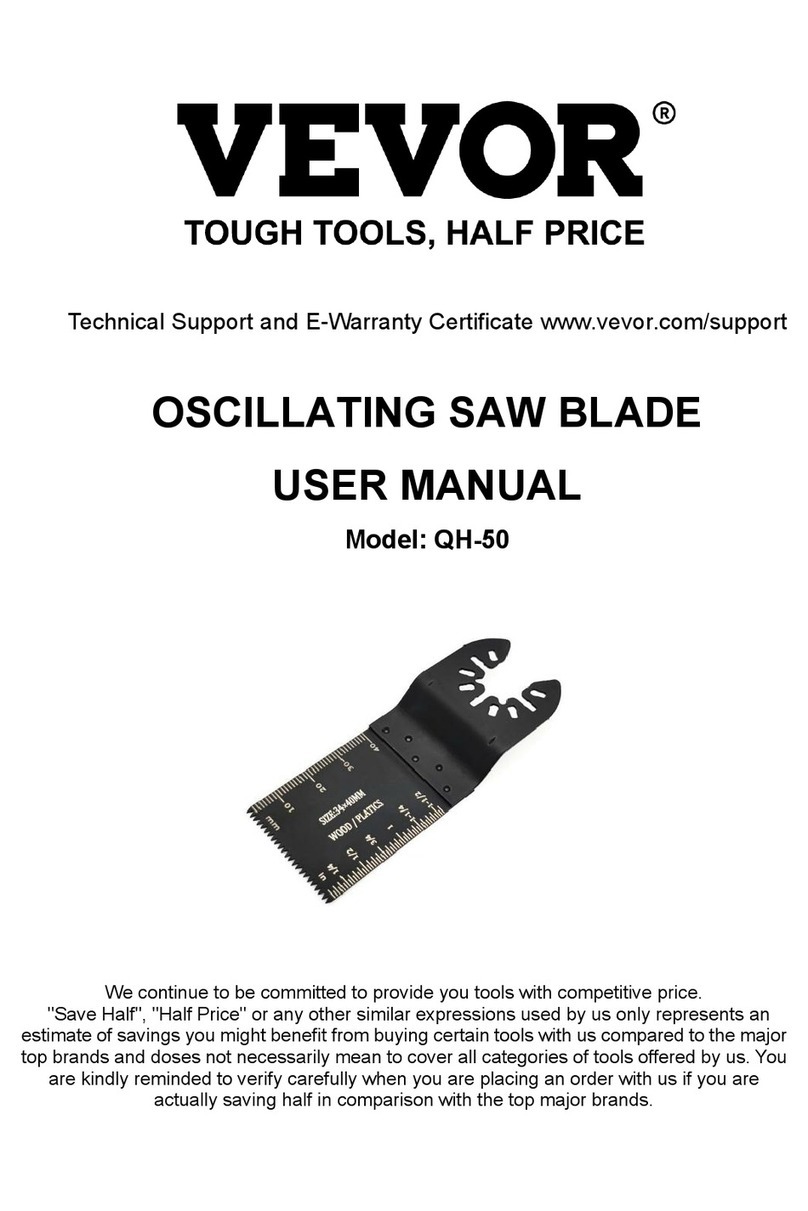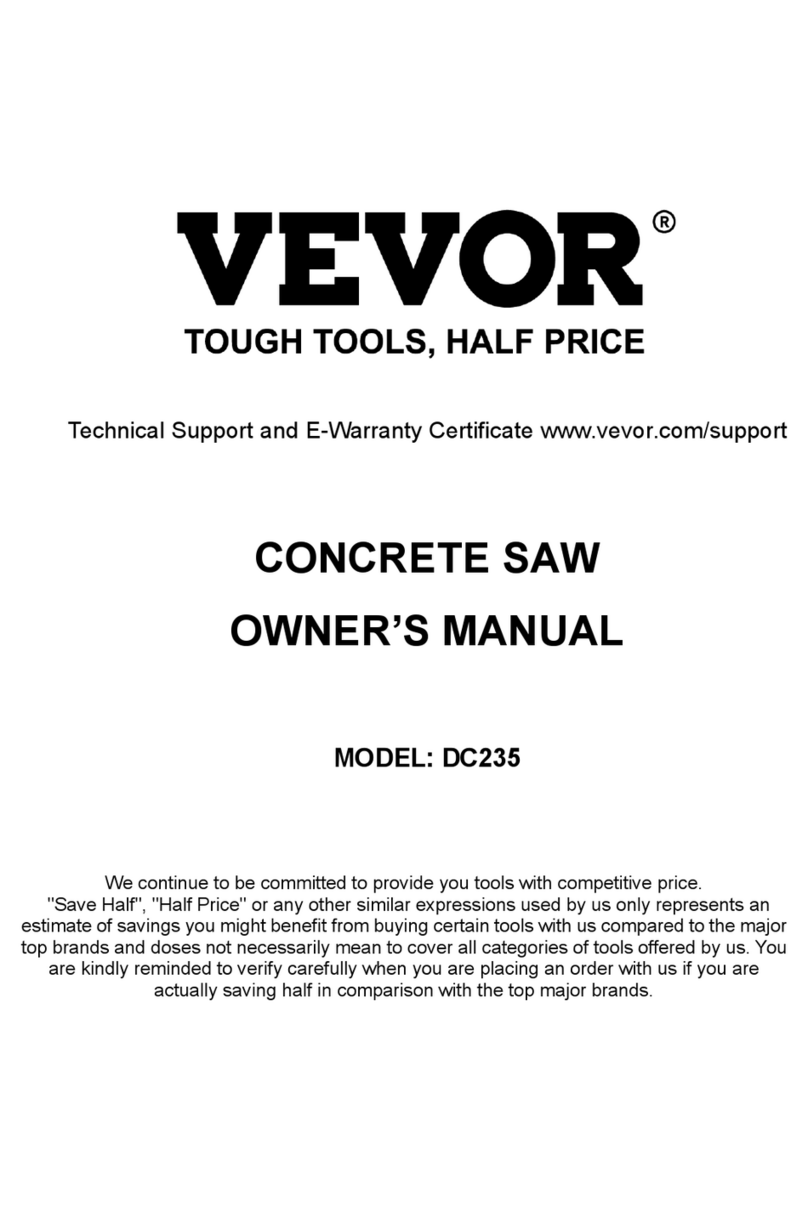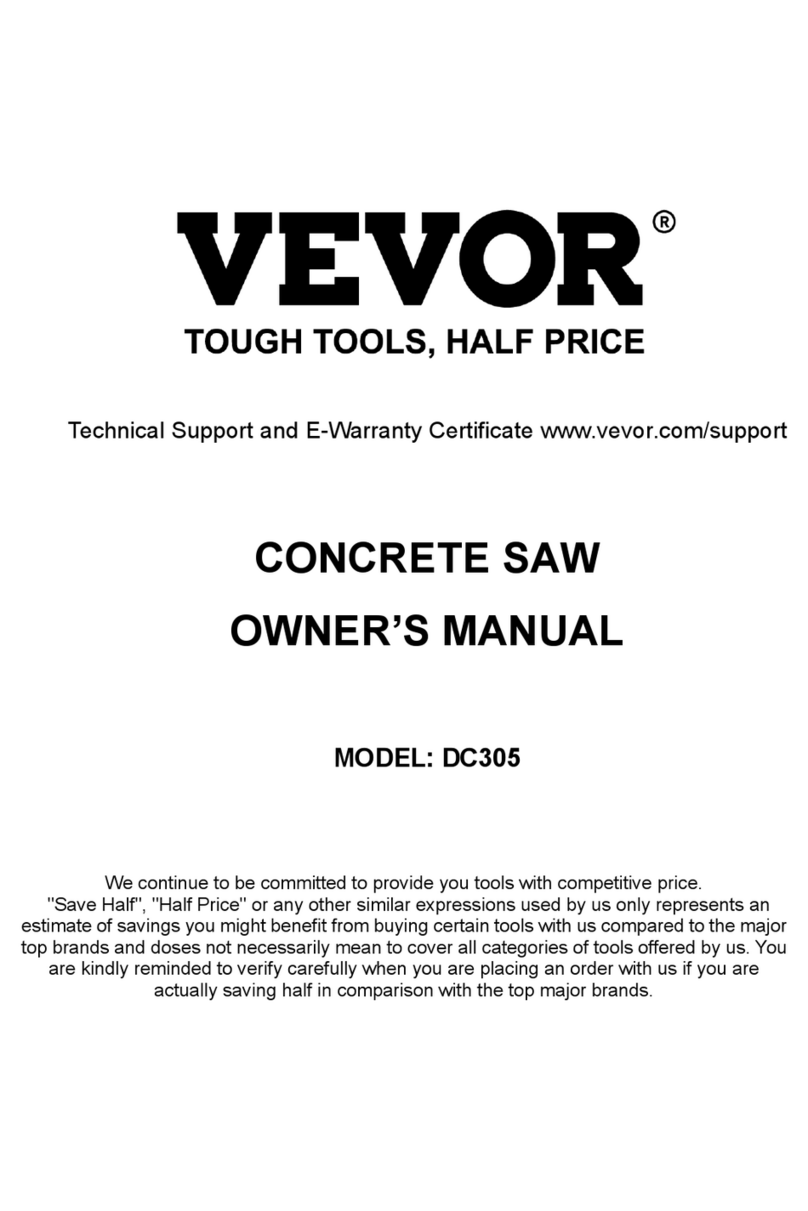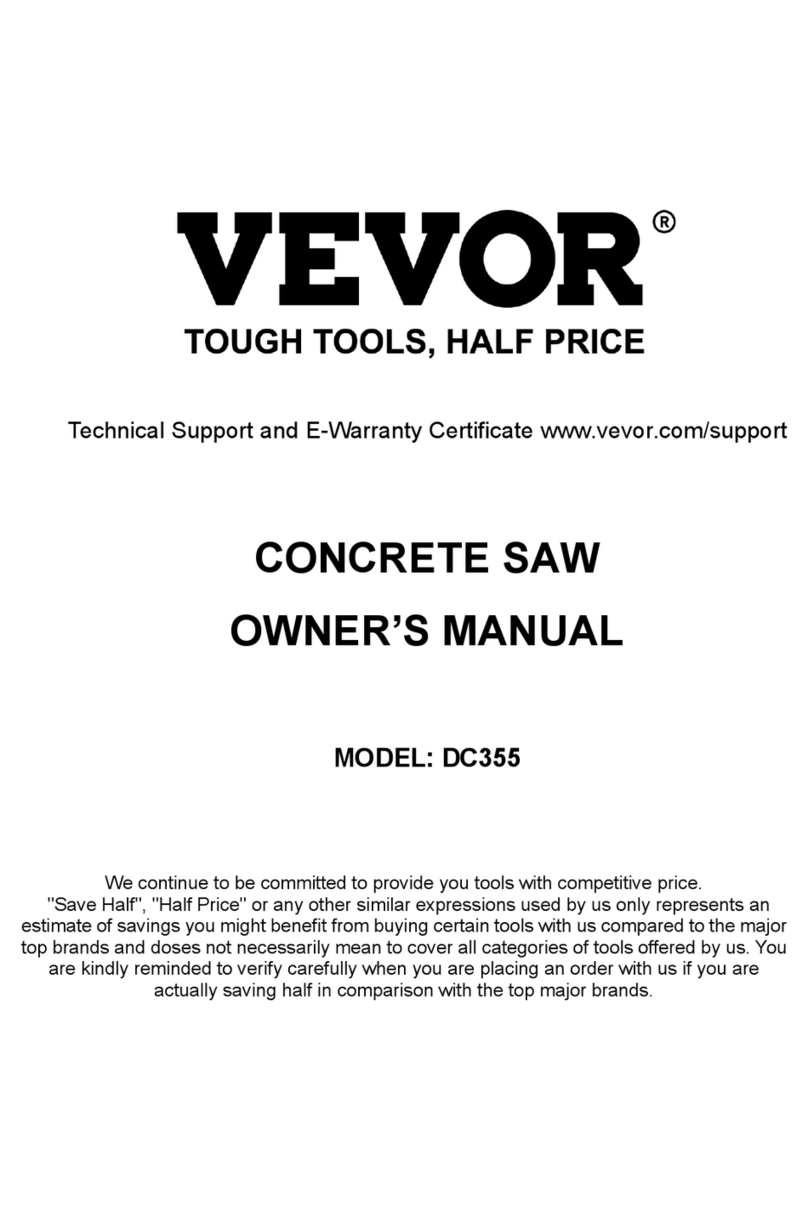
06
c) Immediately reattach the guarding system after completing an operation (such as
rabbeting, dadoing or resawing cuts)that requires the removal of the guard, riving
knife and/or anti-kickback device. The guard, riving knife, and anti-kickback device
help to reduce the risk of inju.
d) Make sure the saw blade is not contacting the guard, riving knife or the work-
piece before the switch is turned on. Inadveent contact of these items with the saw
blade could cause a hazardous condition.
e) Adjust the riving knife as described in this instruction manual. Incorrect spacing,
positioning and alignment can make the riving knife ineective in reducing the
likelihood of kickback.
f) For the riving knife and anti-kickback device to work, they must be engaged in the
workpiece. The riving knife and anti-kickback device are ineective when cutting
workpieces that are too sho to be engaged with the riving knife and anti-kickback
device. Under these conditions, a kickback cannot be prevented by the riving knife
and antikickback device.
g) Use the appropriate saw blade for the riving knife. For the riving knife to function
properly, the saw blade diameter must match the appropriate riving knife and the
body of the saw blade must be thinner than the thickness of the riving knife and the
cutting width of the saw blade must be wider than the thickness of the riving knife.
2) Cutting procedures warnings
a) DANGER: Never place your ngers or hands in the vicinity or in line with
the saw blade. A moment of inattention or a slip could direct your hand toward the
saw blade and result in serious personal inju.
b) Feed the workpiece into the saw blade or cutter only against the direction of
rotation. Feeding the workpiece in the same direction that the saw blade is rotating
above the table may result in the workpiece, and your hand, being pulled into the
saw blade.
c) Never use the mitre gauge to feed the workpiece when ripping and do not use the
rip fence as a length stop when cross cutting with the mitre gauge. Guiding the
workpiece with the rip fence and the mitre gauge at the same time increases the
likelihood of saw blade binding and kickback.
d) When ripping, always apply the workpiece feeding force between the fence and
the saw blade. Use a push stick when the distance between the fence and the saw
blade is less than 150 mm, and use a push block when this distance is less than 50
mm. “Work helping” devices will keep your hand at a safe distance from the saw
blade.
